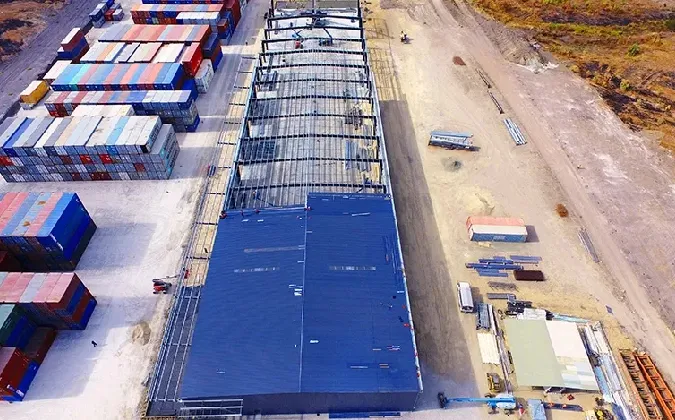- Afrikaans
- Albanian
- Amharic
- Arabic
- Armenian
- Azerbaijani
- Basque
- Belarusian
- Bengali
- Bosnian
- Bulgarian
- Catalan
- Cebuano
- Corsican
- Croatian
- Czech
- Danish
- Dutch
- English
- Esperanto
- Estonian
- Finnish
- French
- Frisian
- Galician
- Georgian
- German
- Greek
- Gujarati
- Haitian Creole
- hausa
- hawaiian
- Hebrew
- Hindi
- Miao
- Hungarian
- Icelandic
- igbo
- Indonesian
- irish
- Italian
- Japanese
- Javanese
- Kannada
- kazakh
- Khmer
- Rwandese
- Korean
- Kurdish
- Kyrgyz
- Lao
- Latin
- Latvian
- Lithuanian
- Luxembourgish
- Macedonian
- Malgashi
- Malay
- Malayalam
- Maltese
- Maori
- Marathi
- Mongolian
- Myanmar
- Nepali
- Norwegian
- Norwegian
- Occitan
- Pashto
- Persian
- Polish
- Portuguese
- Punjabi
- Romanian
- Russian
- Samoan
- Scottish Gaelic
- Serbian
- Sesotho
- Shona
- Sindhi
- Sinhala
- Slovak
- Slovenian
- Somali
- Spanish
- Sundanese
- Swahili
- Swedish
- Tagalog
- Tajik
- Tamil
- Tatar
- Telugu
- Thai
- Turkish
- Turkmen
- Ukrainian
- Urdu
- Uighur
- Uzbek
- Vietnamese
- Welsh
- Bantu
- Yiddish
- Yoruba
- Zulu
Nov . 12, 2024 11:34 Back to list
Understanding Prefab Steel Frame Buildings The Future of Construction
In recent years, the construction industry has witnessed a significant transformation, primarily driven by the need for efficiency, sustainability, and cost-effectiveness. Among the various construction methods, prefab steel frame buildings have emerged as a popular choice for both commercial and residential projects. This approach not only reduces construction time but also offers enhanced durability and flexibility.
What Are Prefab Steel Frame Buildings?
Prefab steel frame buildings, also known as pre-engineered buildings, are structures fabricated in a factory and then transported to the construction site for assembly. The steel frame serves as the backbone of the building, providing structural integrity and support. These buildings are designed using advanced computer-aided design (CAD) software, ensuring precision and optimal use of materials.
The prefabrication process involves cutting, welding, and assembling steel components in a controlled environment, which leads to consistent quality and reduced waste. Once the components are completed, they are shipped to the site, where skilled laborers assemble them quickly and efficiently.
Advantages of Prefab Steel Frame Buildings
1. Speed of Construction One of the most significant advantages of prefab steel frame buildings is the speed of construction. Since a major portion of the building is completed in the factory, on-site construction time is drastically reduced. This rapid assembly can lead to earlier occupancy and quicker returns on investment.
2. Cost-Effectiveness Prefab building methods can be more economical than traditional construction techniques. The reduced labor costs, fewer onsite disruptions, and minimized waste all contribute to lower overall expenses. Additionally, the durability of steel means lower maintenance costs over the lifespan of the building.
3. Sustainability With a growing emphasis on sustainability in construction, prefab steel frame buildings offer an eco-friendly alternative. Steel is 100% recyclable, and its production generally requires less energy than traditional building materials like concrete and timber. Moreover, the efficient use of materials during the prefabrication process minimizes waste, making these buildings a more environmentally friendly option.
prefab steel frame buildings

4. Design Flexibility Contrary to the misconception that prefab buildings are uniform and lack character, modern steel frame designs allow for remarkable creativity. Architects and builders can customize floor plans, elevations, and interior layouts to meet specific client needs, resulting in tailored solutions that don’t compromise aesthetics.
5. Durability and Safety Steel structures are known for their strength and longevity. They are resistant to natural disasters such as earthquakes and hurricanes, providing safety and security for occupants. Additionally, steel is non-combustible and offers superior fire resistance compared to other materials, ensuring added safety for any building.
Applications of Prefab Steel Frame Buildings
The versatility of prefab steel frame buildings makes them suitable for a wide range of applications. They are commonly used for warehouses, factories, retail stores, schools, and even residential homes. Their adaptability also makes them ideal for temporary structures, such as event venues or disaster relief shelters.
As the demand for affordable housing grows, prefab steel homes have gained attention as a viable solution. They can be constructed quickly and at a lower cost, providing much-needed housing solutions without sacrificing quality or safety.
Future Trends in Prefab Steel Frame Construction
The future of prefab steel frame buildings looks promising, with advancements in technology playing a crucial role. Innovations such as 3D printing, smart building technologies, and building information modeling (BIM) are reshaping how these structures are designed and constructed. Furthermore, the increasing focus on sustainable practices and energy-efficient designs will drive the adoption of prefab buildings across various sectors.
Conclusion
Prefab steel frame buildings represent a significant advancement in construction practices, offering a multitude of benefits ranging from speed and cost-effectiveness to design flexibility and sustainability. As the world grapples with the challenges of urbanization and environmental concerns, these innovative structures are poised to play a vital role in the future of construction. Embracing this technology not only enhances the efficiency of building processes but also contributes to creating resilient and sustainable communities.
-
How Do Prefabricated Steel Structures Transform Modern Construction?
NewsJul.14,2025
-
How Do Prefabricated Metal Buildings Redefine Modern Construction?
NewsJul.14,2025
-
How Do Prefab Insulated Metal Buildings and Steel Structures Revolutionize Modern Construction?
NewsJul.14,2025
-
How Do Pre - Engineered Steel Structures Redefine Modern Construction?
NewsJul.14,2025
-
Advancing Modular Construction with Prefabricated Metal Structures
NewsJul.14,2025
-
Advancing Industrial Infrastructure with Prefabricated Steel Solutions
NewsJul.14,2025
Products categories
Our Latest News
We have a professional design team and an excellent production and construction team.












